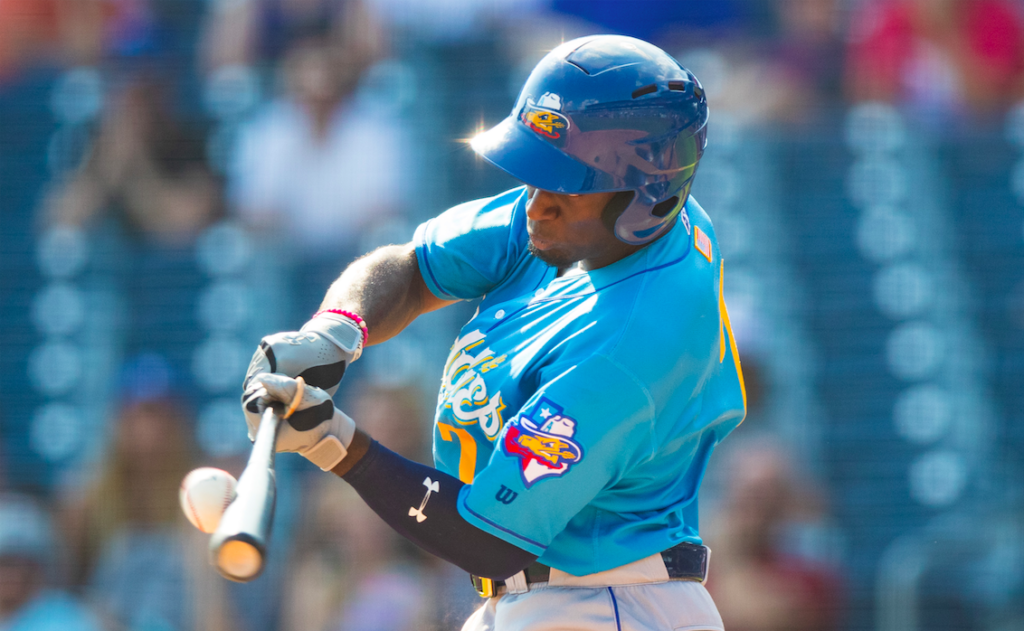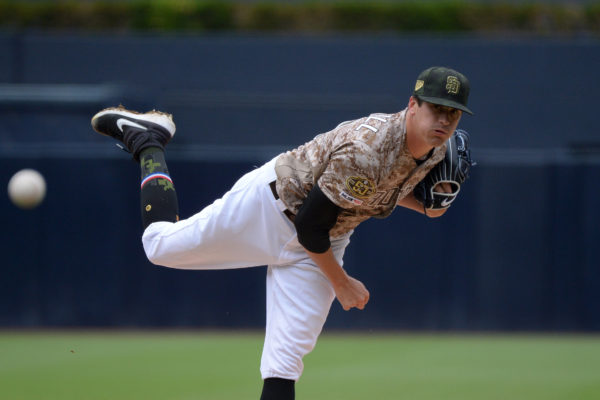A deeper look at the players traded by San Diego during a wild August

Credit: John Moore/ Sod Poodles

Late last Sunday night, San Diego Padres general manager A.J. Preller pulled off a doozy of a trade. A seven-player deal that landed Austin Nola and two relievers from the Seattle Mariners set Twitter and the Hot Stove on fire.
Preller wasn’t done yet. He was just getting started. The Seattle trade was just an appetizer towards the main course.
As the sun began to rise in San Diego, Preller had landed the big one. Ace starting pitcher Mike Clevinger, along with San Diego State alum Greg Allen and a player to be named later, was traded to San Diego.
This is before mentioning the three trades he made before the deals with Seattle and Cleveland. If that wasn’t enough, Preller swung one more buzzer-beater trade with Seattle just as the Trade Deadline came to an end.
What did it cost, however?
Going back to the beginning of August with the Yonder Alonso trade, ten new players have been added to the San Diego roster. In exchange, 15 players were told to pack their bags and travel to a new city to play with a new team (this is not including the two PTBNL’s traded by San Diego).
So, let’s take a closer look at just who, in particular, got traded by Preller in a whirlwind month of August.
The first of three trades done between Preller and Mariners general manager Jerry Dipoto, Yacabonis signed with San Diego on Dec. 19 and was on the 60-man player pool at the time of the trade.
Before his time in San Diego, Yacabonis spent his entire career in Baltimore, amassing a 5.75 ERA in 101 2/3 innings of relief before being granted free agency.
Yacabonis was a depth bullpen piece in San Diego and was a depth piece in Seattle before the Mariners traded three of their relief pitchers to San Deigo. With some spots open on the Major League roster, Yacabonis may see himself back in the majors sooner rather than later.
On July 3, San Diego traded an outfielder to the Kansas City Royals for a relief pitcher. One month later, San Diego traded an outfielder to the Kansas City Royals for a relief pitcher… again.
Instead of Tim Hill coming to San Diego in exchange for Franchy Cordero and Ronald Bolanos, the Padres acquired a rebounding Trevor Rosenthal for the back-end of their bullpen.
This time, the Padres were trading Olivares to the Royals.
Acquired way back in 2018 for Yangervis Solarte, Olivares became one of the more underrated prospects in a loaded San Diego farm system, checking in at No. 20 on MLB.com after displaying a rare combination of speed and power with Double-A Amarillo.
His face says it all 😁
First @MLB home run for Edward Olivares!#FriarFaithful pic.twitter.com/pr9Z2nQbWR
— San Diego Padres (@Padres) August 8, 2020
After posting a .801 OPS with 18 home runs and 35 stolen bases, Olivares earned an invite to Spring Training with an outside chance of making the roster. He impressed the Padres coaching staff so much, and it was he who made the initial 30-man roster. One could say that Olivares’ performance likely squeezed Cordero off the roster.
At the time of the trade, Olivares only batted .176/.222/.294, albeit in just 34 at-bats. While San Diego officials are still high on him, Olivares didn’t have an ample opportunity for regular playing time in a Padres jersey. He’ll get that chance in Kansas City.
One of two prospects to go to Boston in exchange for Mitch Moreland, Potts, was one of three first-round picks made by the Padres in the 2016 Draft. Now, all three of those players are in different organizations.
Drafted as a shortstop, Potts transitioned to third base while occasionally filling in at second base. Since a certain Manny Machado signed with San Diego, however, Potts frequented trade rumors as a prospect with an enticing amount of raw power.
After laying waste to lower-level pitching, Potts struggled in his first taste of Double-A in 2018, but it didn’t stop prospect evaluators from ranking him the 16th best prospect in their system.
While his second go-around of Double-A saw the power numbers return (17 home runs, .178 ISO, 34.6% fly-ball rate), Potts struck out at a 28.6 percent clip while he stumbled to a .227/.290/.406 batting line.
In defense of Potts, he was only 20-years-old and facing stiff older competition. It will be up to Boston to develop him into a regular Major Leaguer.
Rosario was part of the 2016 international signee class that produced Adrian Morejon and Luis Patino alongside other top prospects like Tucupita Marcano and Tirso Ornelas.
At 20-years-old, Rosario has only just begun his development, but his overall athleticism and skills as a center fielder drew praise from across the Padres’ front office. His talent led MLB.com to name him the 19th overall prospect in San Diego’s system.
In an aggressive push, Rosario was sent to High-A Lake Elsinore as a 19-year-old to test his mettle. While he didn’t blow anyone away with his performance, he posted a respectable .242/.372/.314 batting line in 525 plate appearances.
Rosario has shown a keen eye at the plate despite his young age. While facing older competition, Rosario took 87 walks, good for a 16.6 percent rate.
Perhaps the main reason both Potts and Rosario were traded is due to San Diego’s upcoming roster crunch. After this season, both prospects needed to be added to the 40-man roster lest they are exposed to the Rule 5 draft. San Diego needed to sort out which prospects they wanted to keep while Boston has the roster space to carry them, making the two a good match for trades.
I am currently attending San Diego State University while working on achieving a major in journalism. At SDSU, I write for The Daily Aztec while also hosting the sports radio show “Picked Off”, for KCR Radio. A loyal fan of San Diego sports, I hope to bring content that you will enjoy reading.
Yes, the Padres received some talent. But WOW….they gave away SOOOO much. These trades are going to pay off for years to come (for the other guys). Oliveras would be perfect right now, and many of the other guys will be great in the future. It will be fun to watch the pads in the playoffs, but at what price?
Nice article Jason. While trading so many highly ranked prospects was not ideal, we knew the trade prices would be high this deadline. I’m still not totally thrilled with everything we gave away but, talent costs talent. The current team looks well equipped to go deeper into the playoffs than originally forecast.
Overall, I’m giving AJ a B+ right now. Trade grades are always more accurate down the road. We’ll see and hope we got the better ends of all of these.
I think we traded prospects that were blocked in the big leagues or on the rule 5. Credit AJ for being creative and not letting go of the core prospects who are part of the future. I have faith in our scouts that we’ll replenish the farm.